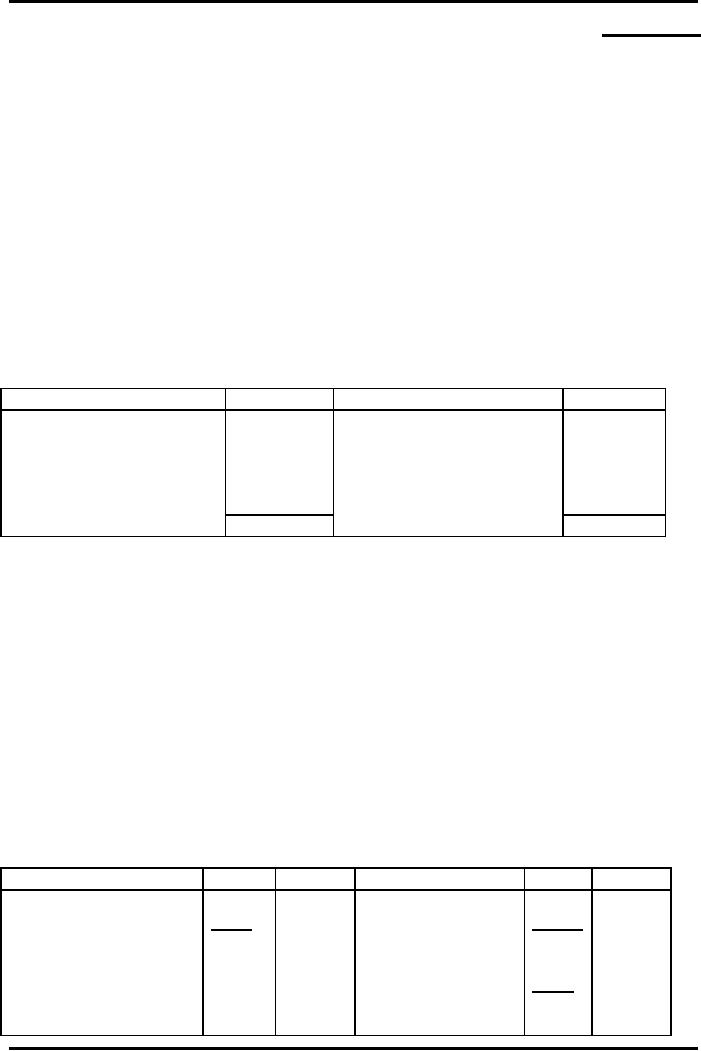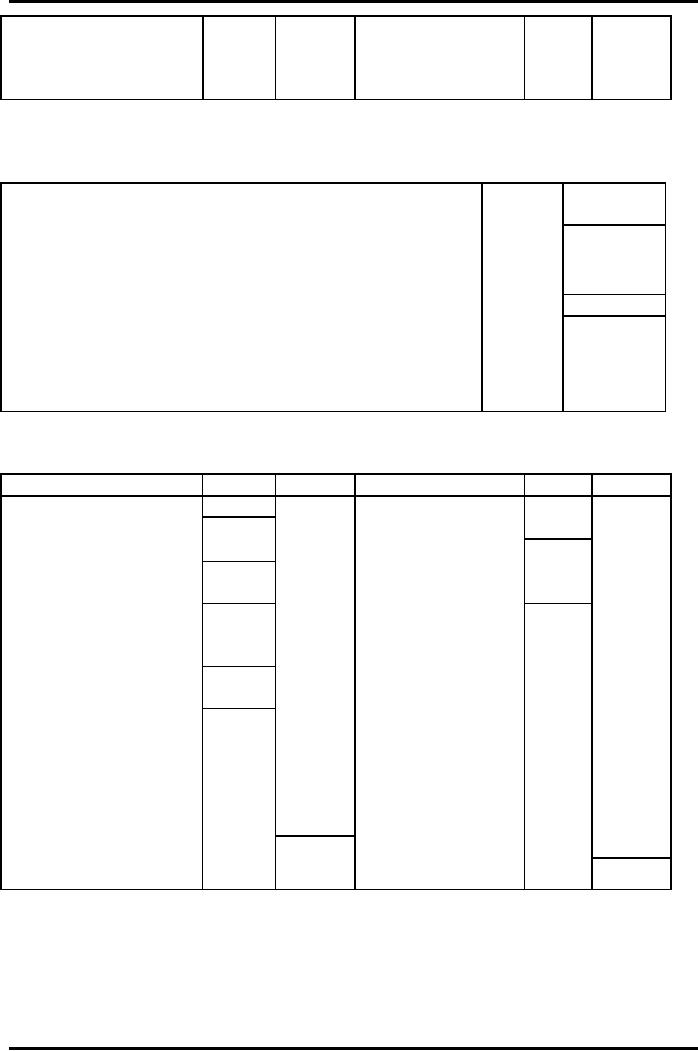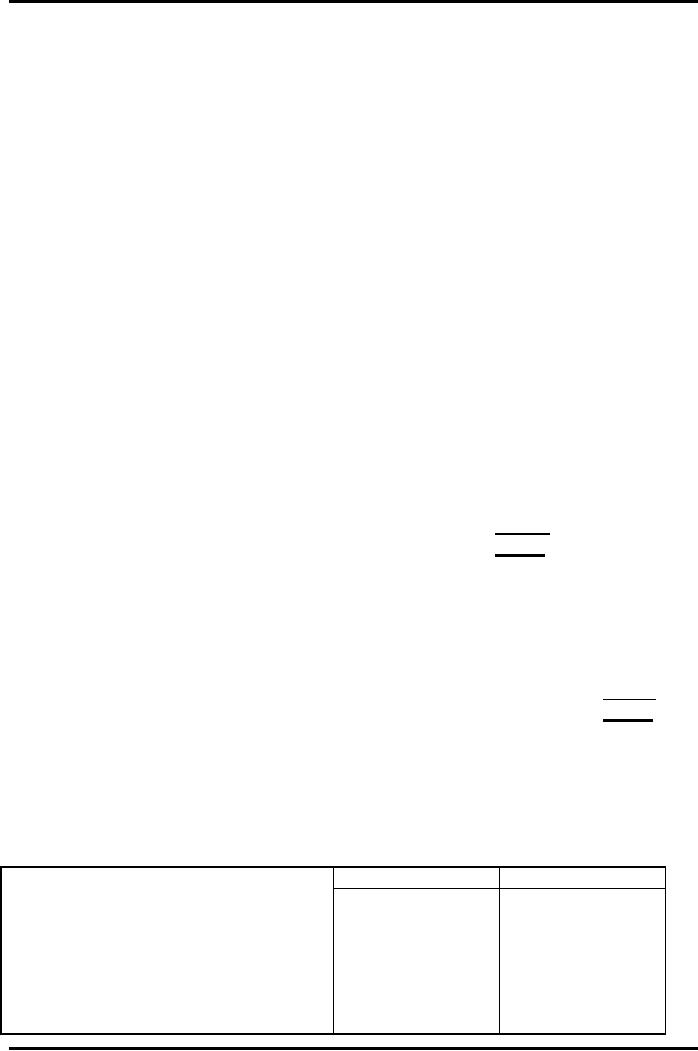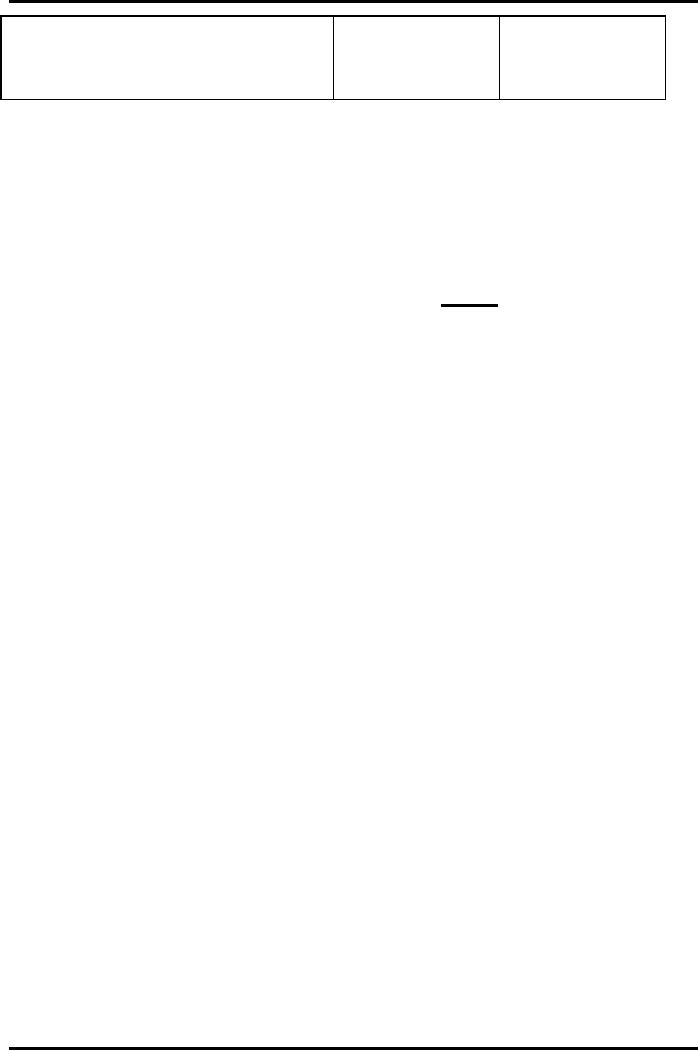 |
PRACTICING ACCOUNTING FOR INCOMPLETE RECORDS |
| << ACCOUNTING FOR INCOMPLETE RECORDS |
| CONVERSION OF SINGLE ENTRY IN DOUBLE ENTRY ACCOUNTING SYSTEM >> |

Advance
Financial Accounting
(FIN-611)
VU
LESSON
# 2
PRACTICING
ACCOUNTING FOR INCOMPLETE
RECORDS
Following
question illustrates how
adjustments are incorporated in
the closing statement
of
affairs and
what is the difference in a
Balance Sheet and a Statement of
Affairs.
By solving
this question students will
learn that the only
items of Statement of Profit or loss
are
four
i.e., opening balance of owners'
equity, closing balance of owners'
equity, fresh capital
and drawings
the result after adjusting
these items accordingly will be
Net profit for the
year.
Remember one
thing the adjustments like
depreciations, provision for
doubtful debts, accruals
etc are
not accounted for in the
statement of profit or
loss.
Question
Ali and
Bilal are partners in a firm
sharing profits and losses in
the proportion of 3:2.
They
keep
their books on the single
entry system. On 31 December, 2006,
the following Statement
of
Affairs was
extracted from their
books:
Liabilities
Rs
Assets
Rs
Capital
Accounts
Plant &
Machinery
30,000
Ali
25,000
Stock
20,000
Bilal
20,000
Sundry
Debtors
35,000
Loan-
Bilal
25,000
Cash at
Bank
15,000
Sundry
Creditors
30,000
1,00,000
1,00,000
On 31st December, 2007, their assets
and liabilities were: Sundry
Debtors Rs 40,000;
Sundry
Creditors Rs
25,000 Plant & Machinery Rs
50,000; Stock Rs 30,000;
Bills Receivable Rs
5,000;
Cash at Bank Rs 25,000;
Loan- Bilal Rs
25,000.
You are
required to prepare a Profit and Loss
Statement for the year
ended 31st
December,
2007 and a
Statement of Affairs as at that
date after taking into
consideration the
following:
a) Plant and
machinery is to be depreciated by 10%
p.a.
b) Stock is
to be reduced to Rs 25,000.
c) A
provision for bad debts to
be raised at 5% on Sundry
Debtors
d) Interest
on loan is to be allowed at 6%
p.a.
e) During
the period Ali and Bilal
draw Rs 5,000 and Rs 3,000
respectively.
Solution
Statement
of Affairs
Ascertainment
of Combined Closing Capital as on
December 31, 2007
Liabilities
Rs
Rs
Assets
Rs
Rs
Loan-
Bilal
25,000
Plant &
Machinery
50,000
Add:
Outstanding
1,500
26,500
Less:
Depreciation
4,000
46,000
Interest
Stock
25,000
40,000
25,000
Sundry
Debtors
Creditors
Less:
Provision for 2,000
Doubtful
debts
38,000
87,500
Bills
Receivable
5,000
5

Advance
Financial Accounting
(FIN-611)
VU
Combined
Capital
Cash at
bank
25,000
(balancing
figure)
1,39,000
1,39,000
Ali
& Bilal
Statement
of Profit and Loss for the
year ended
31.12.2007
Rs
Combined
closing Capital (as
above)
87,500
Add:
Combined Drawings during the
year (Rs 5,000+Rs
3,000)
8,000
95,500
Less:
Combined Opening Capital (Rs
25,000 + Rs 20,000)
45,000
Profit
before adjustments
50,500
Divisible
profit:
Ali-3/5th of Rs. 50,500
30,300
Bilal
2/5th of Rs.
50,500
20,200
50,500
Ali
& Bilal
Balance
Sheet as at 31.12.2007
Liabilities
Rs
Rs
Assets
Rs
Rs
Plant &
Machinery
50,000
CapitalAli
Opening
balance
Less:
Depreciation
4,000
46,000
25,000
Add:
Profit
25,000
Stock
30,000
Sundry
Debtors
40,000
55,300
Less:
Drawings
5,000
50,300
Less:
Provision for
2,000
Doubtful
debts
38,000
Capital-
Bilal
Opening
Balance
Bills
Receivable
5,000
20,000
Add:
Profit
Cash at
bank
25,000
20,200
40,200
Less:
Drawing
3,000
37,200
Loan-
Bilal
25,000
Outstanding
Interest
1,500
Sundry
Creditors
25,000
1,39,000
1,39,000
Following
question illustrates how
changes in the balances of
assets and liabilities affect
the in
crease or
decrease in the balances of
owner's equity.
Important
tips:
∑ Increase
in the balance of asset will cause an
increase in the owner's
equity
∑ Increase
in the balance of liabilities will cause
a decrease in the owner's
equity
∑ Decrease
in the balance of asset will cause a
decrease in the owner's
equity
6

Advance
Financial Accounting
(FIN-611)
VU
∑
Decrease in
the balance of liabilities will cause an
increase in the owner's
equity
∑
Increase in
balance means that closing balance is
greater than the opening balance
and
vice
versa.
Question
Calculate
net profit for the
year ending on December 31, 2007
from the information
regarding
changes
occurred at the end of the
year in following balances:
Rupees
Increase in
Machinery
14,000
Increase in
Stocks
6,000
Decrease in
Debtors
2,000
Decrease in
Cash
1,000
Increase in
Creditors
1,500
Decrease in
Accrued expenses
300
Drawings
during the year 2007
10,000
Fresh
capital introduced during
the year 2007
4,000
Solution
Working:
Rupees
Increase/decrease
in owner's equity (net
assets)
Increase in
Machinery
14,000
Increase in
Stocks
6,000
Decrease in
Debtors
(2,000)
Decrease in
Cash
(1,000)
Increase in
Creditors
(1,500)
Decrease in
Accrued expenses
300
15,800
Statement
of Profit or Loss
For the
year ended December 31,
2007
Rupees
Increase in
owner's equity
15,800
Add
Drawings
10,000
Less Fresh
Capital
(4,000)
Net
Profit
21,800
Problem
questions
Q.
1
A and B are
carrying on business in partnership
sharing profits and losses
equally. They were
unable to
maintain full and complete records. From
the following available
information,
compute
the profits of the firm and
prepare a Balance Sheet:
1.1.2007
(Rs)
31.12.2007
(Rs)
Land and
Building (Cost)
50,000
50,000
Machinery
(Cost)
60,000
75,000
Furniture
(Cost)
20,000
25,000
Stock
12,000
30,000
Debtors
17,000
22,000
Bank
4,900
5,000
Cash
1,100
5,000
7

Advance
Financial Accounting
(FIN-611)
VU
Prepaid
Insurance Premium
5,000
-
Bills
Receivable
-
8,000
Creditors
60,000
50,000
Bills
Payable
10,000
-
At the
beginning of the year, the
capitals of the partners
were equal. During the
year, A brought
in Rs.
15,000 and B has withdrawn
Rs. 5,000. An insurance
policy matured during the
year for
Rs.
10,000. A sum of Rs. 4,000
has become bad out of
debtors. Provision has to be made
for
depreciation
@ 10% on Land and Building,
Machinery and Furniture.
Q.
2
From
the following information
calculate net profit for
the year ending on December
31, 2007
by preparing
statement of profit or
loss:
Rupees
Increase in
Furniture
78,000
Decrease in
Stocks
25,000
Decrease in
Debtors
11,000
Increase in
prepaid rent
2,000
Increase in
Bank
7,000
Increase in
Creditors
10,000
Decrease in
Accrued expenses
3,000
Drawings
during the year 2007
35,000
Fresh
capital introduced during
the year 2007
50,000
8
Table of Contents:
- ACCOUNTING FOR INCOMPLETE RECORDS
- PRACTICING ACCOUNTING FOR INCOMPLETE RECORDS
- CONVERSION OF SINGLE ENTRY IN DOUBLE ENTRY ACCOUNTING SYSTEM
- SINGLE ENTRY CALCULATION OF MISSING INFORMATION
- SINGLE ENTRY CALCULATION OF MARKUP AND MARGIN
- ACCOUNTING SYSTEM IN NON-PROFIT ORGANIZATIONS
- NON-PROFIT ORGANIZATIONS
- PREPARATION OF FINANCIAL STATEMENTS OF NON-PROFIT ORGANIZATIONS FROM INCOMPLETE RECORDS
- DEPARTMENTAL ACCOUNTS 1
- DEPARTMENTAL ACCOUNTS 2
- BRANCH ACCOUNTING SYSTEMS
- BRANCH ACCOUNTING
- BRANCH ACCOUNTING - STOCK AND DEBTOR SYSTEM
- STOCK AND DEBTORS SYSTEM
- INDEPENDENT BRANCH
- BRANCH ACCOUNTING 1
- BRANCH ACCOUNTING 2
- ESSENTIALS OF PARTNERSHIP
- Partnership Accounts Changes in partnership firm
- COMPANY ACCOUNTS 1
- COMPANY ACCOUNTS 2
- Problems Solving
- COMPANY ACCOUNTS
- RETURNS ON FINANCIAL SOURCES
- IASBíS FRAMEWORK
- ELEMENTS OF FINANCIAL STATEMENTS
- EVENTS AFTER THE BALANCE SHEET DATE
- PROVISIONS, CONTINGENT LIABILITIES AND CONTINGENT ASSETS
- ACCOUNTING POLICIES, CHANGES IN ACCOUNTING ESTIMATES AND ERRORS 1
- ACCOUNTING POLICIES, CHANGES IN ACCOUNTING ESTIMATES AND ERRORS 2
- BORROWING COST
- EXCESS OF THE CARRYING AMOUNT OF THE QUALIFYING ASSET OVER RECOVERABLE AMOUNT
- EARNINGS PER SHARE
- Earnings per Share
- DILUTED EARNINGS PER SHARE
- GROUP ACCOUNTS
- Pre-acquisition Reserves
- GROUP ACCOUNTS: Minority Interest
- GROUP ACCOUNTS: Inter Company Trading (P to S)
- GROUP ACCOUNTS: Fair Value Adjustments
- GROUP ACCOUNTS: Pre-acquistion Profits, Dividends
- GROUP ACCOUNTS: Profit & Loss
- GROUP ACCOUNTS: Minority Interest, Inter Co.
- GROUP ACCOUNTS: Inter Co. Trading (when there is unrealized profit)
- Comprehensive Workings in Group Accounts Consolidated Balance Sheet